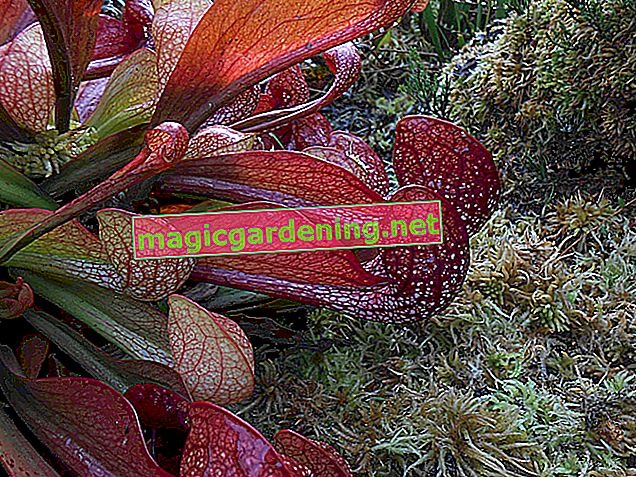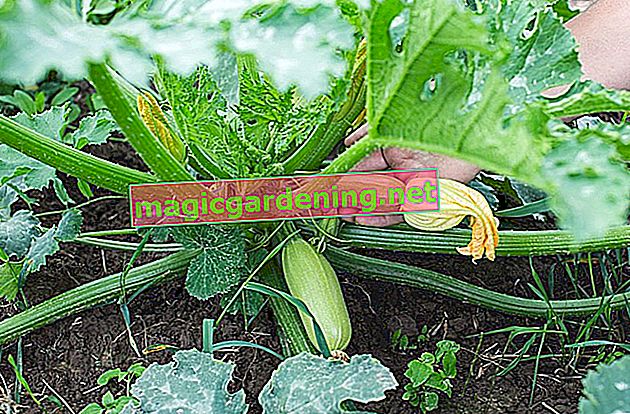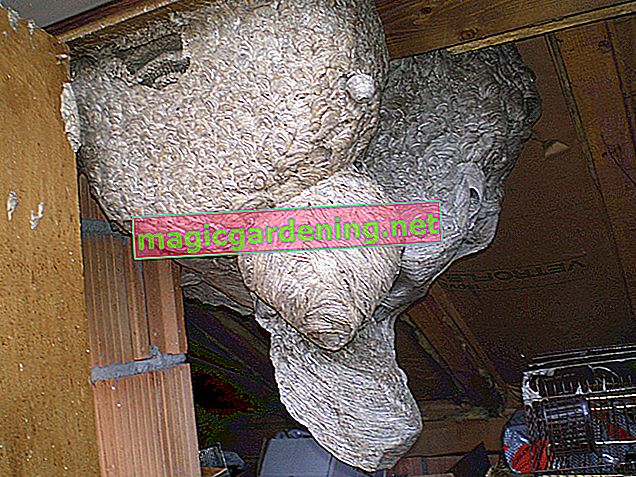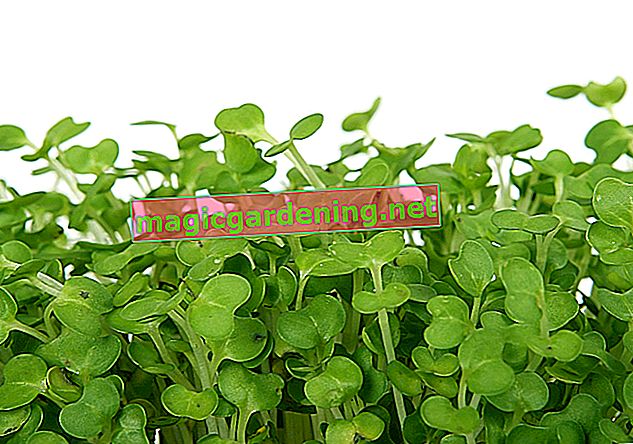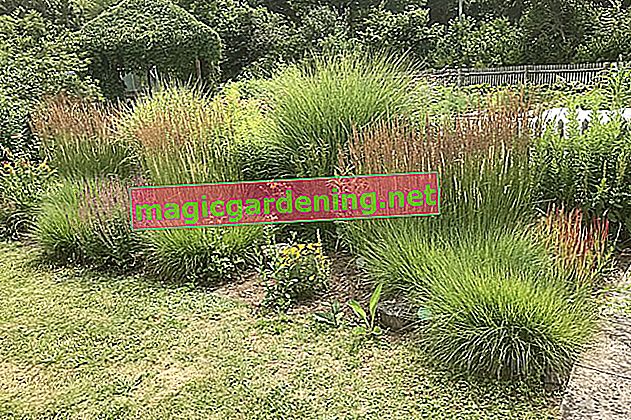
Plant Waldsteinia properly
When the days get shorter in autumn, it is time to plant Waldsteinia. Choose a partially shaded to shady location with moderately dry to fresh soil. Thorough weeding and the removal of roots and stones begin the planting process. Then dig out the planting pits at a distance of 25-35 cm. Collect the earth in a wheelbarrow to mix in leaf compost and horn shavings (€ 6.39 on Amazon *). The potted young plants come in the middle of a hole that is filled with the substrate up to the lower pair of leaves. Now press the soil with your hands and water.
also read
- Is the Waldsteinia poisonous?
- How to care for your Waldsteinia - the best tips and tricks
- Is the Waldsteinia ternata poisonous?
Care tips
You will spend very little time on care work on a golden strawberry. The following actions are important:
- Water in summer and winter when it is dry
- Soft rainwater and normal tap water alternate
- A start fertilization with leaf compost and horn shavings (€ 6.39 at Amazon *) in March
- Only cut back withered flower stems to prevent self-sowing
- Cut the leaves, stressed by winter, close to the ground in January / February
In autumn we recommend covering the root disc with leaf compost. The organic material protects the root ball from permanent moisture and keeps the soil vital.
Continue reading
Which location is suitable?
The golden strawberry is in top form in the partially shaded and shady location. This is especially true in moderately dry to freshly moist soil, which is well-drained and humic. A neutral pH value around 7 is beneficial for vitality and abundance of flowers.
The correct planting distance
As a prime example of a group plant, the golden strawberry comes into its own in tuffs or a planar arrangement. The Waldsteinie is almost double its height of 10-20 cm in width. With a planting distance of 25-35 cm, you create a dense vegetation. In the best case, place 8-12 copies per square meter on large areas.
What soil does the plant need?
The Waldsteinia particularly loves the loose, humus-rich soil on tree grates and along the edges of trees. The soil should be rich in nutrients and not too moist. First-class water drainage is essential because the otherwise robust perennial cannot stand waterlogging.
What is the best time to plant?
The Waldsteinie is one of the classic perennials with a robust winter hardiness right from the start. Therefore, choose the autumn months of September to mid-November as the planting time. At this time of year, the soil has stored the sun's heat, which is very beneficial for rapid rooting.
When is the flowering time?
The innumerable, bright yellow shell flowers with five overlapping petals are in the limelight from April to June. The blooming spectacle is accompanied by dark green, threefold serrated leaves. Thanks to a brownish-red foliage color from autumn, the golden strawberry also adorns the garden during the cold season.
Cut Waldsteinia correctly
Cut the withered flowers down to the evergreen foliage, unless you want to self-sow. It is not worth the effort to attract a second bloom, as the perennial does not remount. When the red-brown foliage has lost its beauty at the end of winter, cut the leaves close to the ground. Thanks to this care, the fresh shoot has a free path for another blooming garden season.
Watering Waldsteinia
If the site conditions meet all requirements, the normal rainfall is sufficient for an adequate water supply. Only water the Waldsteinie when the surface of the earth is noticeably dry. For the ideal pH value, it is advantageous if you alternate between normal tap water and soft rain or pond water.
Fertilize Waldsteinia properly
At the start of the season, the golden strawberry is happy about a portion of leaf compost with horn shavings. Work the organic material into the surface of the root disc and then pour. Cover the soil with leaf compost one more time in autumn without incorporating it. In this way, it acts as a natural winter protection and provides the soil organisms with plenty of supplies for the next growing season.
Overwinter
The golden strawberry is completely hardy. While other perennials retreat into their root ball, the robust Waldsteinia adorns your garden diligently throughout the winter. As a supportive measure, we recommend covering the root disc with leaf compost in autumn without incorporating the material. In this way the evergreen plant receives a natural winter protection, while at the same time the soil life is vitalized.
Propagate Waldsteinia
By dividing the root ball, you can multiply the Waldsteinia in no time at all. Dig up the perennial in spring or fall. On a firm surface, divide the root ball into several segments, each with at least 2-3 shoots. In the partially shaded to shady location, place the sections in the humus-rich, fresh to moderately dry soil, maintaining the previous planting depth, and water.
Continue reading
Waldsteinia in a pot
You won't get much pleasure from a golden strawberry in a pot. Rather, the vigorous perennial unfolds its full splendor in flat groups of 10 or more specimens. Predestined as a blooming ground cover for shady locations, the Waldsteinia falls far short of expectations as a solitary in a pot.
Is Waldsteinia Poisonous?
The Waldsteinie falls under the non-poisonous ornamental plants. The rose plant is therefore ideally suited for the greening of beds with little light in the family garden. Although the golden strawberry is closely related to garden strawberries in botanical terms, the fruits are nevertheless inedible due to their high bitter content. If your child tastes it, there is no need to worry. Because of the bilious taste, it sticks to this one test anyway.
Continue reading
Is the Waldsteinie ternata suitable as a lawn substitute?
As a ground cover, the carpet goldberry has a medium crush resistance. As long as you are not considering the perennial as a substitute for a play and sports lawn, it can be considered as a substitute for lawn. As current field tests by the Bavarian State Institute for Viticulture and Horticulture have shown, the plant develops a largely hard-wearing lawn substitute within 3 years. The Waldsteinia plants problematic locations in the shade and under the pressure of the roots of mighty trees with an easy-care, magnificently blooming, evergreen cushion.

